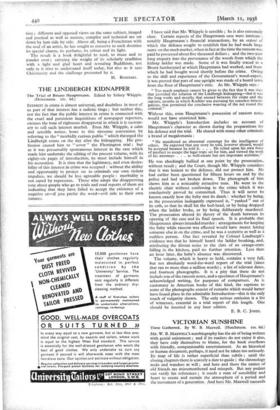LIVING BUDDHISM
The Buddhist Sects of Japan. By E. Steinilber-Oberlin. (Allen and Unwin. los. 6d.)
BUDDHISM as a living force—as opposed to the immense number of its nominal adherents—is today practically confined to Japan, where it not only forms an integral part of the national heritage, but in some sects at least (Nichiren) has in recent years advanced the claim of a world-wide mission. Yet the study of this northernmost branch, which stand to its southern counterpart in many respects in the same relationship as northern Protestantism to southern Catholicism—so interesting both for the transmutations it has undergone as well as for the glimpses it conveys of the soul of Japan, of the mass of the people downtrodden and beladen—is beset by quite unusual diffi- culties. Amongst these Japanese language and Chinese script, probably the most difficult to master in the world, are not even the greatest; above all Japanese Buddhism, being a creed of faith and action, not a sublime metaphysical speculation, cannot be grasped theoretically from parchments and dogmas at all, but only experienced in actual and daily contact with its believers.
It is the unusual interest of this book that it leads us directly into the midst of this living, present-day Buddhism—as far as any written report can ever convey its atmosphere. Other Western scholars, too, have shared the life of the monks, taken part in their spiritual exercises and meditations, shared their bowls of rice with other pilgrims ; but none of them has presented his experiences in such a simple "unformed " state. Taking up sect after sect he gives a short outline of their founder, history and characteristics, if possible in the words in which they were explained to him by one of its adherents, and goes on to describe visits to its temples, conversations with its bonzes, the teachings of his masters, interspersed by extracts from its canonical books, from other writings and poems and from the works of prominent Buddhist scholars of today. Wherever he encounters an obscurity he seeks for an explana- tion ; different and opposed views on the same subject, imaged and poetical as well as austere, complex and technical are set down by him side by side. Above all, being a Frenchman with the soul of an artist, he has sought to conserve to each doctrine its special charm, its perfume, its colour and its light.
The result is a book delightful to read, to muse and to ponder over ; carrying _ the weight of its scholarly erudition with a light and glad heart and revealing Buddhism, not only as it tries to understand itself today, but also as it sees Christianity and the challenge presented by it.
H. ROSINSKt.











































 Previous page
Previous page